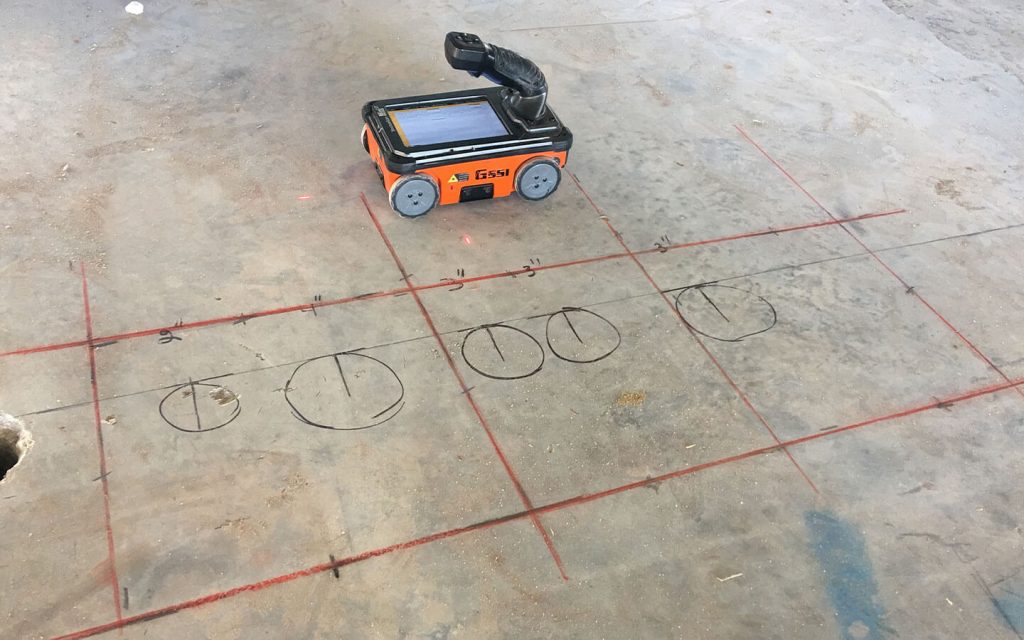Comprehensive Overview to RainierGPR Concrete Scanning Techniques
Comprehensive Overview to RainierGPR Concrete Scanning Techniques
Blog Article
Checking Out the Depths: A Comprehensive Guide to Concrete Scanning and Its Diverse Applications
In the realm of construction and framework growth, the meticulous process of concrete scanning holds a critical duty in guaranteeing the structural integrity and safety and security of jobs. As technology proceeds to advance, the applications of concrete scanning have expanded much beyond simple surface-level assessments.
Importance of Concrete Scanning
Comprehending the importance of concrete scanning is crucial in guaranteeing the safety and honesty of frameworks throughout construction and improvement jobs. Concrete scanning makes use of sophisticated innovations such as ground-penetrating radar (GPR) and electro-magnetic induction to spot embedded things, gaps, or various other abnormalities within concrete structures.
In addition, concrete scanning plays a critical function in ensuring conformity with building codes and guidelines that mandate the defense of existing structural elements during construction activities. By accurately mapping out the interior make-up of concrete, scanning modern technologies make it possible for construction experts to make informed decisions that promote the architectural stability and sturdiness of buildings and infrastructure projects. Fundamentally, the relevance of concrete scanning exists in its ability to secure both the structural honesty and the personnel involved in building and construction ventures.
Technologies Used in Concrete Scanning
Concrete scanning counts on innovative technologies such as ground-penetrating radar (GPR) and electro-magnetic induction to precisely discover embedded objects and anomalies within concrete structures. Ground-penetrating radar operates by emitting high-frequency electromagnetic waves right into the concrete.
Electromagnetic induction, on the other hand, functions by generating magnetic fields around a concrete structure with a transmitter coil. When metal things are existing within the concrete, they disrupt these electromagnetic areas, triggering eddy currents to stream with the metal. By determining the modifications in the magnetic fields with a receiver coil, the system can identify the location of metallic objects in the concrete.
These sophisticated modern technologies play an essential duty in non-destructive testing, guaranteeing the security and stability of concrete frameworks in numerous markets.
Applications in Building And Construction Industry
Within the construction market, concrete scanning modern technology locates diverse applications that boost job effectiveness and safety. In addition, concrete scanning is utilized for finding spaces, such as air pockets or locations of deterioration within concrete, which can endanger the overall stamina of a structure. Concrete scanning plays a vital duty in top quality control by confirming the thickness of concrete covers over reinforcement, guaranteeing compliance with layout specifications and criteria.

Safety And Security Advantages of Concrete Scanning
In the realm of building and construction safety and security, the implementation of concrete scanning modern technology presents a critical advantage in preemptively determining possible risks and fortifying architectural stability. By using advanced scanning methods such as ground-penetrating radar (GPR) and electro-magnetic induction, building groups can accurately locate rebar, post-tension wires, conduits, and various other surprise items within concrete structures. This proactive technique substantially lowers the risk of unexpected strikes throughout exploration, reducing, or coring activities, thereby find this protecting against expensive damages, injuries, and project hold-ups.
In addition, concrete scanning enhances employee security by offering real-time details regarding the structural condition of concrete elements. By dealing with prospective safety and security issues quickly, concrete scanning adds to creating a protected functioning setting and alleviating the chance of architectural failings or crashes on building and construction websites.
Future Patterns in Concrete Scanning
Emerging advancements in scanning innovation are poised to transform the area of concrete evaluation and analysis. One major fad that is getting grip is the assimilation of synthetic knowledge (AI) and artificial intelligence algorithms into concrete scanning tools. By using the power of AI, these systems can evaluate vast quantities of data accumulated throughout scanning processes to supply even more detailed and accurate insights right into the condition of concrete frameworks. This can aid in detecting covert defects, anticipating potential architectural failures, and even recommending maintenance approaches.
One more considerable pattern is the growth of even more straightforward and portable scanning devices. Miniaturization of scanning tools permits less complicated accessibility to restricted rooms and remote places, making examinations more detailed and reliable. In addition, developments in see this website wireless communication technologies allow real-time data transfer and evaluation, facilitating quicker decision-making processes.
Moreover, there is a growing focus on sustainability in concrete scanning modern technologies - RainierGPR Concrete Scanning. Manufacturers are significantly including environmentally friendly materials and energy-efficient features into their gadgets to minimize ecological effect. These future fads are established to boost the performance, precision, and sustainability of concrete scanning practices, shaping the market's future landscape
Conclusion
In verdict, concrete scanning plays an important function in the building and construction industry by making sure the security and efficiency of different jobs. By utilizing advanced modern technologies, such as GPR and radar imaging, experts are able to properly spot possible dangers within concrete frameworks. The applications of concrete scanning are vast and proceed to develop, making it an essential device for preserving the integrity of structures and framework. As modern technology site link advances, the future of concrete scanning holds promising advancements for improving building and construction procedures.

Report this page